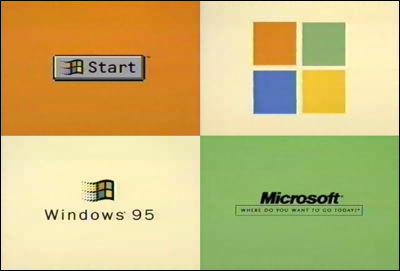The story of the completion of Windows '3D Flipper XXL', how did an unknown startup create a game that has been loved for 20 years?
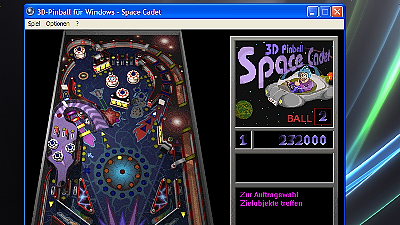
by
The Windows 3D Pinball that came with the Windows 95 expansion pack isn't included in Windows Vista or later, but it's actually because 'no one at Microsoft could understand how the code works.' .. About 20 years ago, the unknown history of how a small, unnamed startup developed Windows 3D Pinball before the release of Windows 95 is revealed.
How Space Cadet pinball won the Windows desktop
http://kernelmag.dailydot.com/issue-sections/headline-story/14948/space-cadet-pinball-windows-history/
Microsoft is spending a lot of money on the release of Windows 95, such as using the Rolling Stones song ' Start Me Up ', but advertising marketing has already started in 1994, the year before the release. The slogan was changed to 'Where do you want to go today?' And we were conducting a promotional campaign to appeal to the masses without expertise.
It was around this time that game developer David Stanford got the chance. At the time, many developers were developing applications for Windows 95, while for games, for technical reasons, applications for MS-DOS continued to be developed. Meanwhile, Stanford decided to start a company called Cinematronics with two colleagues, Mike Sandage and Kevin Gleiner, who met at the conference, and develop games for Windows 95. Mr. Stanford was in charge of contracting as a manager and making relationships with clients, Mr. Greiner was in charge of graphics, and Mr. Sandage was in charge of actually writing code based on the graphics created by Mr. Greiner. Cinematronics was a typical startup that said, 'I don't have the money, but my dreams are big, and I worked for a long time every day with a small number of staff.'
The three started out creating a top-down 2D shooting game, but many wanted a 3D game, so the 2D game wasn't even looked at. However, the three did not get depressed and decided to make a Windows version of DOOM , which was particularly popular at the time, saying, 'If everyone wants a 3D game, let's make a 3D game!' And the DOOM clone was completed by the summer of 1994.
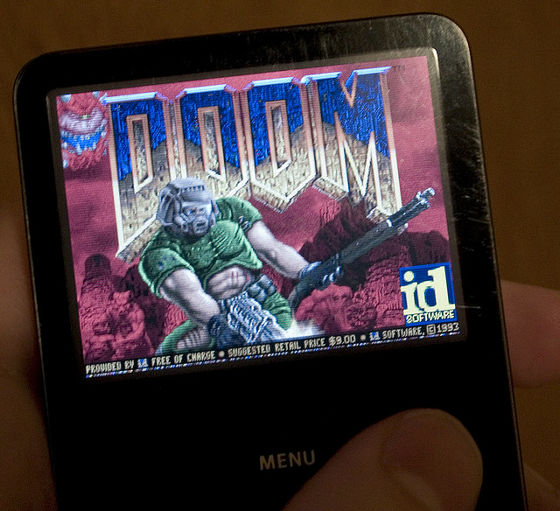
by
At that time, Microsoft wanted a game to be recorded on the OS along with Reversi and Solitaire. Windows 95, which implemented unprecedented breakthrough features, was capable of loading more exciting and up-to-date games such as card games, but already with regard to Windows 95, the Federal Trade Commission and the United States Department of Justice. Microsoft, which had been sued by the Antitrust, wanted to record a bloody game to avoid further problems.
Knowing Microsoft's trends, Cinematronics got stuck and tried to fire glue instead of ammunition, but this game called 'Gluem' has become 'a sinfully ridiculous game'. ..
Stanford also consulted with his friend Alex John , the founder of Microsoft DirectX , but John's boss and head of Windows 95, David Cole , responded too much to Gluem. It seems that he did not show. However, according to John, when Cole heard Gluem's idea, he said, 'Isn't it pinball or something?'
When Stanford heard the word 'pinball' from John, he wrote down the concept of a 3D pinball game using a fictitious pinball machine called 'Pinball Wizard' on the spot, and decided without contacting his friends. I told Microsoft what the game was about. Microsoft then becomes interested in Cinematronics, a small company born in Santa Cruz, USA. Furthermore, when I showed the proposal to Microsoft, Microsoft responded very well, saying, 'I want to see the game.'
Stanford then worked with Cinematronics artists to start designing at the expense of the holidays, but the pinball design, made by stitching together the graphics for each part, was 'terrible.' Looking back on those days, Stanford says.
However, it seems that Microsoft has mercilessly asked programmers who overwork, 'When can I play the game?' And 'Send me a demo.' Stanford, who had to send something in shape to Microsoft, thought, 'Maybe it looks like a real game,' so he printed it out on a dot-matrix printer and then thermofaxed it. Send a screenshot of the game to Microsoft by sending it. It was a screenshot sent with a prayer, but Microsoft said that he gave a nice reply saying 'I like it. I want to play with this soon'.
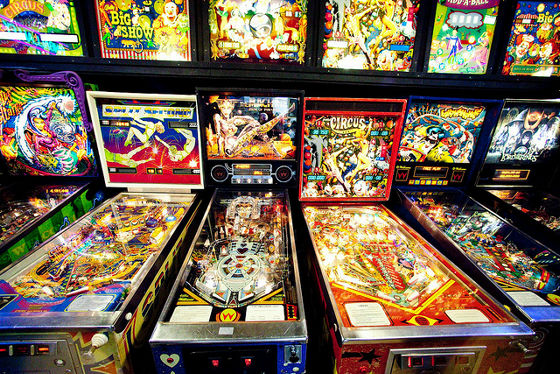
by
After all this, at the end of the summer of 1994, Cinematronics decided to focus on pinball game development until Windows 95 was released. Only nine months were left until April 1995, when the release took place, leaving much to do. It's hard to imagine from now on, but 3D Flipper XXL for Windows 95 was a complex game to develop on a weak machine with a prototype of Windows 95.
In addition, although Mr. Greiner, who is in charge of graphics, was studying graphics, one of the factors that forced him to struggle was that he had no experience of making games using his own graphics. Mr. Greiner often went to the arcade and took pictures to check how each component such as bumper, flipper, plunger, etc. works on the whole. The 3D pinball development did not use the latest rendering technology, which was expensive at the time, but used code that did not know who made it, so 'it is not very sophisticated,' Grinder said. Mr. commented.

by
And Mr. Sandige will implement the code based on the graphic made by Mr. Grinder. Stanford thought 'a game that is as simple as a top-down 2D game and looks like a 3D graphic', but if it was really a top-down 2D game, game development was much easier. Should be. The reason is that the size of the ball can be constant for 2D graphics viewed from directly above. However, in deep 3D games, the ball gets smaller the further you go to the other side of the table and must look the largest when it is in front of you. It's a small point, but for Mr. Sandige, this 'small point' was very important. Mr. Sandige at the time did not think that he could complete this complicated game in a short time.
In addition, Microsoft had little involvement in the development of the game, so it was difficult for Cinematronics members to find and fix bugs on their own. 'We were always panicking. I was always panicking,' said Sandige. Mr. Sandige started coding early in the morning, worked about 18 to 20 hours a day, and slept in the warehouse instead of going home, but someone who entered the warehouse did not notice Mr. Sandige's existence. When he dropped his luggage on his body, he stopped sleeping in the warehouse.
In December 1994, Microsoft announced that it would postpone the release of Windows 95 until August because of the slow backward compatibility of the operating system. The 3D pinball had reached the point where it was possible to make a finished product by the delivery date, but with the grace period, it was possible to make further improvements.
Then, in August 1995, with the release of Windows 95, the 3D pinball 'Space Cadet' will see the light of day.
Space Cadet is also featured in a Windows 95 video guide featuring actor Matthew Perry and actress Jennifer Aniston , who starred in the American blockbuster drama ' Friends' in the 90's.
Microsoft Windows 95 Video Guide with Jennifer Aniston and Matthew Perry from Friends --Full Video --YouTube
Space Cadet, which was included in the Windows 95 expansion pack ' Microsoft Plus! For Windows 95 ', will then be included in Windows NT 4.0, 2000, Me, and XP, but when Windows Vista was being developed. Despite the bug, it will not be recorded because 'no one at Microsoft could understand how the code works'.
Cinematronics was later acquired by Maxis , which was absorbed by Electronic Arts in 1997, so the development members of Space Cadet were scattered and never contacted again. It seems that Microsoft tried to develop an original pinball game based on the data of Cinematronics, but the result is disappointing, and Microsoft's original pinball game has not been realized even now. And even now, 20 years after its release, Windows 95 is no longer in use, and the 3D pinball 'Space Cadet' is still unforgettable and loved by many .
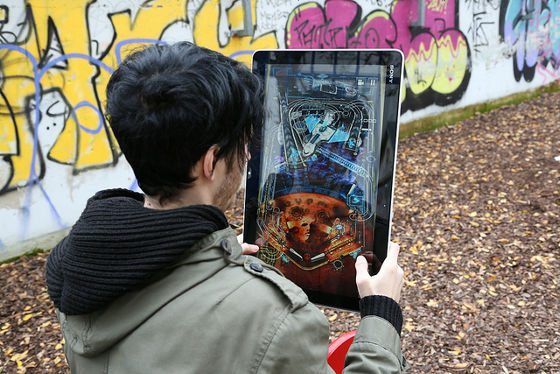
by ScaarAT
Related Posts:







